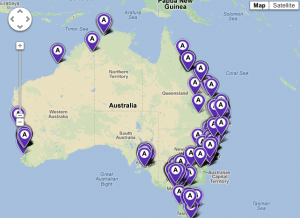“As a freelancer, my business is pretty straightforward: I write words for a living and charge people to use them. As a creativity merchant, I’m not paid by the hour; I’m paid for each word that survives the ‘delete’ button, which is fortunate since the left side of my brain is a bit lazy.
Getting new commissions (or business) is a process that involves a bit of back-and-forth with editors over email — outlining story ideas, deadlines and finally agreeing on a price. As such, I never have the need to create estimates and I don’t need to log the time I spend working on my stories.
I’ve been using Zoho Invoice ever since I started freelancing, mainly because I didn’t have a spare five hours to create an invoice template in Excel when I first set up shop. To me, Zoho looked like the easy way out — and to date, it has been.
But how does it compare to the latest bit of accounting software, Reach Accounting? I’ve spent a bit of time using Reach, and for its price point and target market, it’s a pretty handy piece of software for sole traders and small businesses — I can see that it would be particularly valuable for virtual assistants and teleworkers.
As soon as you sign up for your Reach account, you’re asked to enter in your basic, yet important, business information — like your ABN and bank account details — so, without doing anything else, you can send an invoice to one of your customers right away. With Zoho, there was some setting up of invoice templates, adding customers and setting up email gateways, which was a bit tedious.
Then there’s the matter of cost. While Zoho allows you to invoice your customers in Australian dollars, it’s still an American company so your $15 monthly fee is subject to change with the exchange rate; you’re also charged a currency conversion fee from your bank, which is something to be wary of.
Reach, on the other hand, is an Australian company so you don’t need to worry about exchange rates and conversion fees; something I find quite appealing. Plus, included in Reach’s $14.95 monthly fee is the actual accounting software, whereas a full suite of accounting software with Zoho costs a little more.
With Reach, you’re effectively getting more bang for buck and even if I don’t use the accounting side of Reach’s offering, it’s good to know it’s there. I feel the same way about the bread maker I have at home, even though I don’t actually eat bread. Which raises the question: how many businesses would end up using the full accounting side of Reach?
As an accounting novice, I still have an accountant who weaves their magic, presumably in MYOB. I just export and email my earnings for that year, along with my business expenses — which is basically my entire life since I’m a freelancer, so the lack of an ‘export’ function in Reach is a major drawback for me.
I imagine most sole traders and small businesses would do something similar with their accountants and I don’t know how many accountants would be eager to use Reach.
But Reach excels precisely because it isn’t MYOB — or even Xero, for that matter. And it doesn’t need to be. Reach caters to a section of the market that was previously alienated by the likes of MYOB; and now those business owners have a low-cost, easy-to-use solution to their Excel spreadsheet and shoebox-full of receipts. It’s also Australian; and supporting Australian businesses, as an Australian business, myself, just makes sense.
So, at the end of the day, for my money, it’s worth it.”
If you’re a sole trader or small business owner looking for a low-cost way to manage the accounting side of your business, Reach could be the solution. EzyLearn has partnered with Reach Accounting so that you can access a free student account when you enrol in our Reach training course.
















